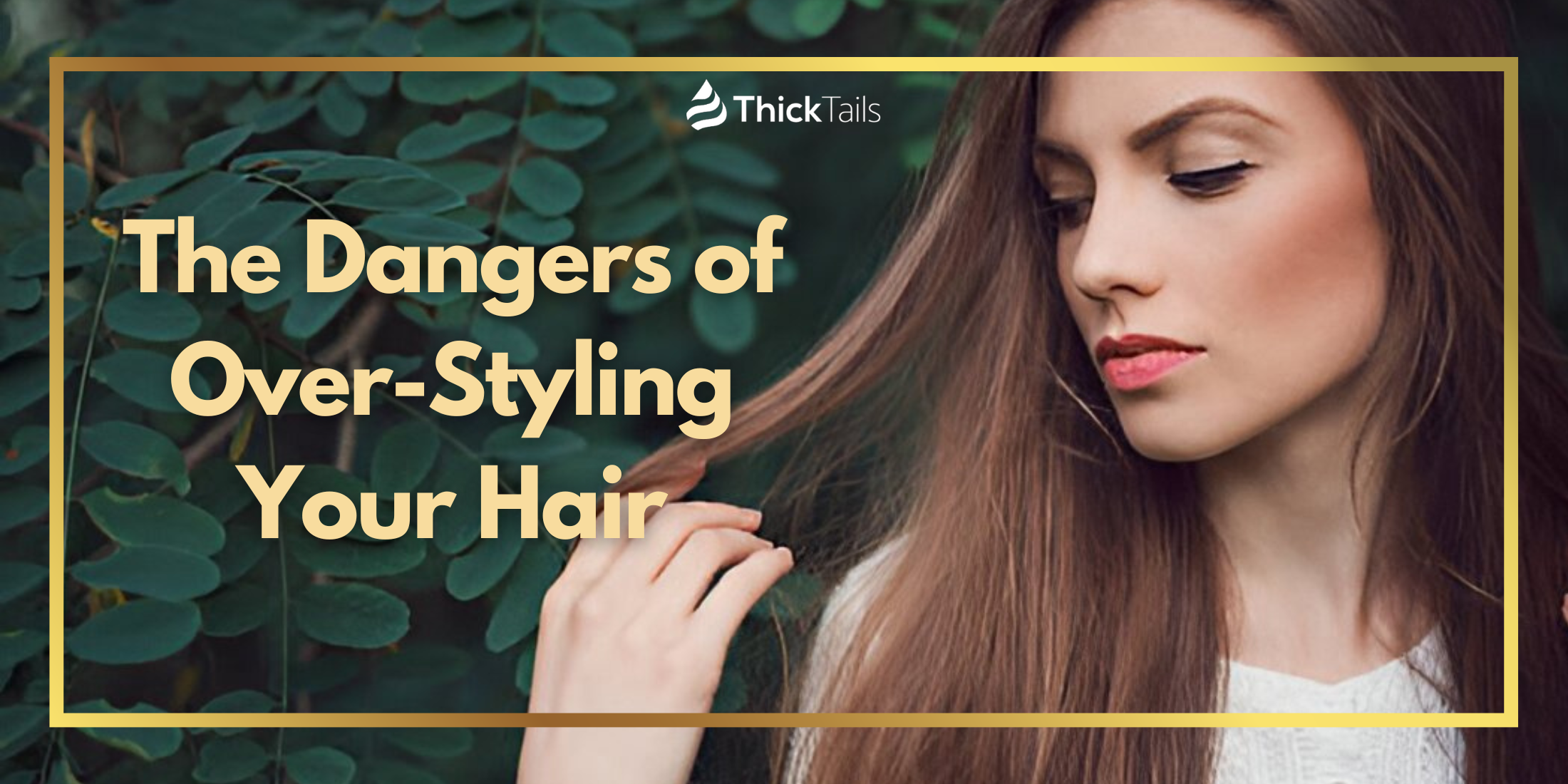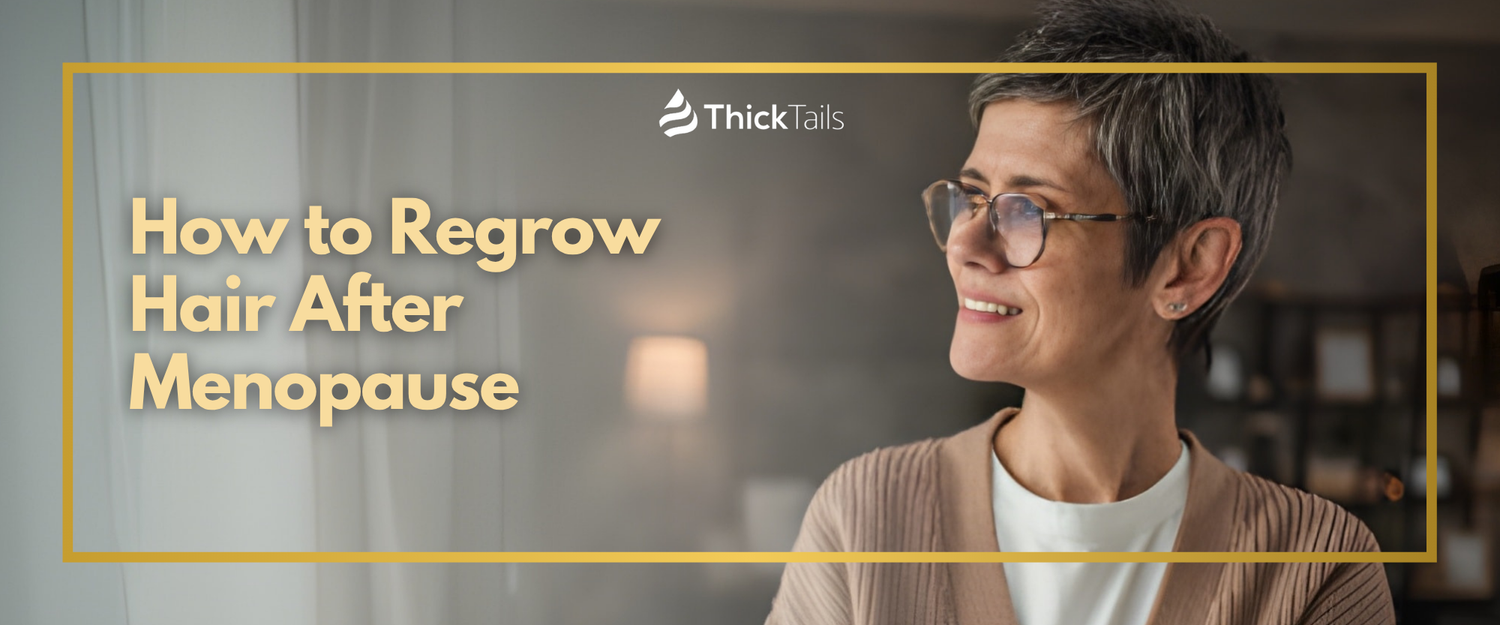As women, our hair can often be a source of pride and identity. We spend countless hours styling it just right, experimenting with new cuts and colors, and trying out the latest products to achieve that perfect look. However, as we age or go through significant life changes like menopause, postpartum recovery, or high levels of stress; our hair may become more fragile and prone to damage. While we may not think much about the harm caused by over-styling our locks, the truth is that it can have some serious consequences for both the health of our hair and overall well-being. In this blog post, we will explore the dangers of over-styling your hair and provide useful tips on how to take care of your tresses during these crucial life stages. So grab a cup of tea and let's dive in!
I. Negative Effects of Over Styling

Frequent styling can have negative effects on our beloved locks, and it's important to know what we're getting ourselves into. One of the most common issues is excessive hair fall, which can be a result of over-styling. This happens when we subject our hair to too much heat, chemicals, and styling tools, causing it to weaken and eventually fall out. Over-styling can also lead to dry and brittle hair, split ends, and even scalp irritation. While it's okay to experiment with different hairstyles, it's important to give our hair a break every once in a while and let it breathe. After all, healthy hair is beautiful hair!
A. Heat Damage: Impact of Regular Use of Curling Irons and Straighteners
When it comes to achieving the perfect hairstyle, many of us rely on curling irons and straighteners as our go-to styling tools. However, frequent and prolonged use of these hot tools may lead to heat damage and issues such as hair fall and breakage. Over-styling can strip the hair of its natural oils and moisture, making it brittle and prone to damage. To minimize the impact of heat styling, it's important to use these tools in moderation and to protect your hair with heat protectant sprays and creams. Educating ourselves on the impact of regular use of curling irons and straighteners can help us make informed choices about styling our hair while maintaining its health and beauty.
B. Chemical Damage: Risks Associated with Frequent Coloring and Perming
Frequent coloring and perming can result in chemical damage to your hair, which can lead to several risks. This damage can cause your hair to weaken, become brittle, and ultimately fall out. Additionally, over-styling can also take a toll on your hair's health, resulting in split ends and breakage. It is essential to understand the potential dangers of chemical treatments to maintain healthy and strong hair. While hair coloring and perming can provide temporary results, it is important to consider the damage that these processes can cause over time. Therefore, it's vital to take precautionary measures to ensure the longevity of your hair's health.
C. Mechanical Stress: How Daily Brushing and Combing Weaken Hair
Mechanical Stress is a term that refers to the damage inflicted on our hair due to excessive styling. Daily hair care routines such as brushing and combing, if done vigorously and repeatedly, can put mechanical stress on our strands and weaken them over time. This can ultimately lead to hair fall, breakage, and a dull appearance. In an effort to maintain our hair's beauty, we often expose it to various styling tools and products, forgetting that simple habits like excessive brushing and combing can be equally damaging. Learning about the impact of mechanical stress can help us make conscious changes to our daily routines and keep our precious locks healthy and strong.
II. Impact of Tight Hairstyles
Hairstyles are a great way to switch up your appearance and express your personal style. However, over-styling can have negative consequences on the health of your hair. Tight hairstyles, such as braids, weaves, and high ponytails, can cause hair fall and damage over time. The constant tension on the hair follicles can weaken them, resulting in breakage and thinning. It's important to give your hair a break from tight hairstyles and allow it to breathe. Opt for looser hairstyles or try protective styling techniques that don't put too much tension on your hair. Remember, the health of your hair should always come first.
A. Traction Alopecia: Hair Loss Due to Tight Ponytails and Braids
Traction Alopecia, a type of hair loss caused by excessive tension on hair follicles, is an important issue that requires attention from many who suffer from hair fall due to over-styling. Tight ponytails and braids are two particularly common hairstyles that can lead to Traction Alopecia by putting too much strain on hair follicles. Over time, this can cause hair to become weaker and fall out. While it can be sad to part with a go-to style, it's important to prioritize hair health and give hair a break from tight styles to avoid Traction Alopecia. Education and awareness about the causes and prevention of Traction Alopecia can go a long way to help avoid this frustrating hair loss experience.
B. Scalp Health: How Constant Tension Affects Scalp Circulation
The health of our scalp plays a crucial role in maintaining healthy and strong hair. It's important to note that constant tension caused by over-styling can greatly affect scalp circulation, leading to hair fall and other scalp-related issues. Our scalp is surrounded by a complex network of blood vessels that supply nutrients and oxygen to the hair follicles. However, when our scalp experiences constant tension, blood flow is restricted, leading to inadequate nourishment of the hair roots and ultimately causing hair fall. This is why proper hair care, including avoiding over-styling and using gentle hair care products, is essential for maintaining a healthy scalp and strong hair.
C. Breakage and Thinning: Long-Term Effects of Tight Styles on Hair Strength
Maintaining beautiful and healthy hair requires consistent effort and careful consideration of your styling choices. For individuals who love tight hairstyles, such as braids and twists, it's important to understand the effects of Over-Styling, which can lead to C. Breakage and Thinning. The long-term impact of tight styles on hair strength is often overlooked, resulting in hair fall and weakened hair follicles. The tension from tight styles can cause stress on the hair roots, leading to possible breakage and hair thinning. This is a crucial issue that requires attention as it can negatively affect hair health in the long run. Therefore, it's important to be aware of the consequences and adjust your hair care routine accordingly to prevent C. Breakage and Thinning.
III. Preventative Measures for Healthier Hair

Maintaining healthy hair is not just about hot oil treatments, weekly hair masks or using the latest hair products. If you've experienced hair fall or breakage, it's important to evaluate your hair care routine and make some changes. Over-styling can be a major contributor to unhealthy hair, so opt for simpler hairstyles or try a protective style that won't cause too much tension on your ends. You should also make sure to avoid excessive heat styling and always use a heat protectant before blow drying or flat ironing. Beyond styling habits, consider incorporating nutrient-rich foods into your diet or taking hair growth supplements. By taking preventative measures, you can enjoy healthier, stronger hair for the long term.
A. Gentle Styling Alternatives: Low-Heat and No-Heat Methods
In today's fast-paced world, where everyone is in a rush to reach their destination, the daily hair wash routine can turn into a challenging task. However, the excessive use of heat styling tools can lead to severe damage to your hair, causing hair fall or breakage. If you want to keep your locks healthy and prevent over-styling, it's essential to opt for gentle styling alternatives. Low-heat and no-heat methods are the perfect options that allow you to style your hair without damaging it. By using the right products, such as shampoo and conditioner that cater to your hair's needs, you can achieve any hairstyle without risking any damage. With proper knowledge of these methods, you can maintain healthy hair strands while enjoying your favorite hairstyle.
B. Protective Products: Benefits of Using Heat Protectants and Serums
When it comes to styling our hair, we all want to achieve the perfect look. However, excessive styling can take a toll on the health of our hair, leading to breakage and hair fall. This is where heat protectants and serums come into play. These products not only help to protect our hair from the excessive heat of styling tools, but also nourish and strengthen our locks, reducing the risk of damage and hair fall. By incorporating a hair serum or heat protectant into your hair care routine, you can enjoy the benefits of styling your hair without the worry of over-styling and damaging your precious locks.
C. Regular Hair Care Routine: Importance of Moisturizing Shampoos and Conditioners
Maintaining a regular hair care routine is essential to keep your locks healthy and luscious. But, did you know that using moisturizing shampoo and conditioner is the key to soft and manageable hair? Harsh chemicals present in some shampoos strip off the natural oils from the scalp, making our hair dry and susceptible to damage. Therefore, investing in a good quality shampoo and conditioner that contains natural ingredients and hydrating properties, like avocado oil or coconut milk, can make all the difference. Using a serum or leave-in conditioner after washing can also help in preventing hair fall and tangles caused by over-styling. So, next time you reach for your hair care products, remember to nourish your tresses with some much-needed moisture!
In today's society, it is common to constantly strive for the perfect hair. However, as we have learned throughout this blog post, frequent styling and tight hairstyles can have damaging effects on our precious locks. From heat damage to mechanical stress, it is important to be aware of the negative consequences that these beauty practices can have on our hair. Traction alopecia, scalp health issues, and breakage and thinning are just a few of the potential risks we face when continuously subjecting our hair to tight styles. But fear not, my dear readers! There are preventative measures we can take to ensure healthier hair in the long run. By exploring gentle styling alternatives such as low-heat or no-heat methods, using protective products like heat protectants and serums, and implementing a regular hair care routine with moisturizing shampoos and conditioners, we can help reduce the likelihood of damage caused by over-styling. So next time you reach for that curling iron or tight ponytail holder, remember the importance of balance and caring for your tresses. Let's break this cycle of damaging our hair in pursuit of perfection - because after all, natural and healthy hair will always be in style. Don't wait - start implementing these changes now and see the positive impact on your hair health. Your strands will thank you for it! Now go forth and embrace your beautiful tresses with love and care!







